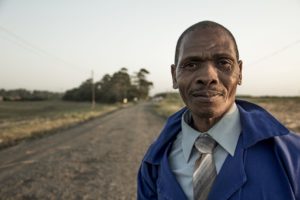I stepped out the door for my early morning run. A heavy fog hung on the streets. It reminded me of times in Nepal when fog would hang low in the valley where we were church planting. The sun didn’t come out to clear away the fog until mid-morning. Until then, it was hard to go anywhere. The roads were dangerous. It was difficult to see a clear pathway. Finding your way to a clear Disciple Making Movements strategy can feel like that heavy fog.
Sorting Through The Many Approaches
The Disciple Making Movement (DMM) and Church Planting Movement (CPM) world can be confusing for beginners. There are many different resources, approaches, and training. These are constantly changing and evolving. Trainers like myself adapt, evaluate, and learn. While approaches do overlap, it can be confusing to determine which strategy to use.
We want, of course, to pick the most effective one! We hear a speaker who says this worked, but then we read another book that says something slightly different.
As you begin, consider the various approaches and choose the right one for your context. What you decide upon can be a combination (hybrid) of several approaches. You must adapt them for your own unique context.
Adjust your strategy as you evaluate fruitfulness, listening to God’s specific direction for you and your team.
Make decisions about a strategy choice for now, then stick with it for a year or two. Give the method you are using time to take effect. Then, if it doesn’t produce the fruit you are hoping for, rethink your approach and make adjustments. Coaching by an experienced practitioner can assist you in this process.
Learning, Adapting And Applying
My journey with Disciple Making Movements has had many twists and turns. My first exposure to churches that multiply came from George Patterson and a system called Train and Multiply. Some years later, David Garrison’s book on Church Planting Movements was released. Reading that, I gained further understanding about CPM principles. Whatever I learned, I tried to apply to what we were doing in making disciples among unreached peoples. Some things seemed to work well in our context. Others did not.
I then became familiar with One Story and began to consider orality issues. The people groups we worked with in Nepal and India were Oral Culture peoples. We started training disciples using stories from the Bible. After teaching the story, we used Discovery Bible Study questions to discuss it. I then read the T4T book by Steve Smith and Ying Kai and had the privilege of learning under Ying when he visited India.
With each exposure, my understanding grew and developed. We created our own hybrid approach based on T4T but also including elements of storying and Discovery Bible Study. This has had good success in many places, but not in all. We are still evaluating, adapting, and learning.
Launching Disciple Making Movements requires us to constantly evaluate. We learn, apply, check for fruitfulness, pray, and make changes. As we experiment with various approaches, must be careful not to become confused and spin in circles rather than making progress.
Research the options and seek the Lord’s guidance. He will show you where to begin. Remember,
“Trust in the Lord with all your heart and lean not on your own understanding; in all your ways submit to him, and he will make your paths straight.”
Prov. 3:5,6 NIV
How To Determine Which DMM/CPM Approach To Use
1. Understand the differences between the two most common DMM approaches- T4T and DBS
Some years ago Mission Frontiers magazine published a wonderful article. It compares the two main approaches used in launching Disciple Making (and Church Planting) Movements. I recommend you read the full article for a more complete comparison.
The basic difference between T4T (Ying Kai) and DBS (Watson), in my understanding, is this.
- T4T emphasizes first leading people to Christ, then starting disciple-making groups with them.
T4T (Training for Trainer) groups train disciples, new and old, to share their faith with others. As they lead people to Christ, they then train them to be disciples who make disciples. You train them until they can train others. Many, but not all T4T groups eventually become house churches.
- DBS emphasizes starting evangelistic Discovery Bible S
tudies with interested seekers.
As they study the Word of God, you then lead them to a commitment to Christ. Many DBS groups are seeker groups. These often evolve into disciple-maker groups or churches. DBS groups don’t always continue if those in the group do not make decisions to follow Christ. So a pure DBS approach tends to have greater attrition (groups discontinue) rates than does T4T.
The basic question is: When will you start groups? Before people come to Christ (DBS), or after (T4T)?
2. Consider orality issues.
Many unreached peoples are from oral cultures. Not using an oral culture-friendly approach among them can dramatically hinder multiplication. Instead of reading scripture, you may want to learn and tell stories using audio recordings or an audio Bible. You may want to consider creating materials to illustrate the stories. Then, those who can not read (or prefer not to) can remember them easily. In oral culture contexts, it is often good to use drama in the learning process as well.
Will you adapt your strategy to fit the learning style of those you are trying to reach? How?
3. Filter these in light of your unique context.
After considering the above, think carefully about your context. How do people normally learn? Where do they like to gather? Will they meet in homes? Or workplaces?
Consider issues related to gender. Will you have separate groups for the men and women or meet together to study and learn? In some Muslim contexts, it is better to start separate groups/house churches for the men and women.
What about people groups? Do the people you want to reach have barriers between them? Would it be better to start some groups for those from Muslim backgrounds? And other groups for those who are Hindu or Buddhist? Will you choose one particular type of people to primarily focus on?
4. Decide on one of the approaches, or develop your own hybrid.
As you consider the above, remember, this is a work in progress and can be adjusted. What is important is to get started! Don’t get stuck trying to determine clear answers to everything.
It might be helpful to list five or six key principles that you want to make sure you will apply whatever approach you take.
For example, you might say: We will make our house churches participatory. We won’t preach, but will allow each person to join and share their ideas in response to questions.
Or, you might write down this principle. Every believer will be immediately trained to share their testimony with others. Our movement’s DNA will include bold and active evangelism.
Still Confused?
I hope this has provided some guidance for you in the process and not brought more confusion! If there are things that are not clear, write to me or ask in the comments below.
Oral Culture Baby Lessons

Sign up to learn how to use the Oral Culture friendly Baby Lesson set for short term discipleship.




Comments
Some people say we want to meet at a local church, some find it difficult to meet at someone’s house or at the job. Can that lead to barrier of the movement in the future, or how can i go about that, thank you.
Author
Great question! Yes, it sometimes can create a barrier to the movement if the group meets at a building church. That can be a significant barrier for seekers to come to the group as many, especially from other religious backgrounds, find it difficult to enter the church building. It is far easier for them to go to a neighbor’s home. Its less conspicuous and creates less persecution for them. I’d be cautious about having the meetings in a church building. Perhaps more vision casting to the people about the purpose being to reach the lost around us?
I learned T4T first and then learned DBS. I also learned the 4 Fields strategy, which is a hybrid of T4T and DBS. I have leaned towards the DBS model because in my context people just aren’t coming to Christ after hearing the gospel for the first time. It is easier to get them to study the Bible with you, and then hopefully they will come to Christ. What I have noticed is that T4T has one advantage (which is also a disadvantage) over DBS. T4T or the 3/3rds meeting includes a vision casting element. This helps to motivate people to go and make disciples. DBS doesn’t have this, so there may be less motivation. However, I have found it challenging to come up with new vision messages to present, and so have realized that it takes more skill to do T4T or the 3/3rds meeting than a DBS meeting. This is because in a sense you have to be able to preach, and do some study and preparation to come up with your vision message. It seems to me that this would lessen the number of people in a group who would be willing to start their own group because there is a higher bar to pass. Greater ability is needed. With DBS, all you have to be able to do is know how to facilitate a meeting. Do you agree with this C. Anderson and what are your comments? This also means that when a T4T group becomes a church, they will expect to hear a sermon much more readily than when a DBS group becomes a church. Would you agree with that?
Author
Great questions and thoughts! Vision casting doesn’t have to be difficult or be a message. Its amazing how even new believers can cast vision for lost people to come to Christ around them. I do agree though that in some ways its simpler to leave this out. What I don’t think is true in what you said is that “you have to be able to preach.” Vision casting and preaching are not at all the same. Maybe I’ll do a blog soon with a list of vision casting short examples! Keep thinking and considering these things as well as experimenting. Blessings!
C. Anderson, thanks for your training. It is really good! I have another question. Assuming I was starting a DMM using the DBS approach, with the expectation that the groups become house churches, in my context I would probably want the DBS groups to share leadership, or designate at least two people to be the elders of the church. Would it work for the church to transition to having people speak messages, or would that disrupt the group’s idea that the way to learn from God is through the DBS style?
Author
Hi Wes. When you introduce speaking messages you lose the participatory aspect of learning from God’s word together and it quickly becomes more clergy-centric. This is likely to slow or stop any chance of rapid multiplication. No problem having more than one person lead various parts or having several leaders/elders in the group but always aim to multiply rather than grow groups. Hope that helps!
Shortly Madam l need to learn deeply about DMM it’s making strong foundation step by step to make new disciples day to day.
Thanks for this breakdown. I think it’s really helpful. It’s helped clarify some details for me, especially since I have been exposed to different approaches.
Thanks for these studies, I am learning a lot, hope these lessons will help in my CPM and also will help me bring up a DMM Groups,blessings
Author
happy to hear that Grace!
Thanks and God bless

